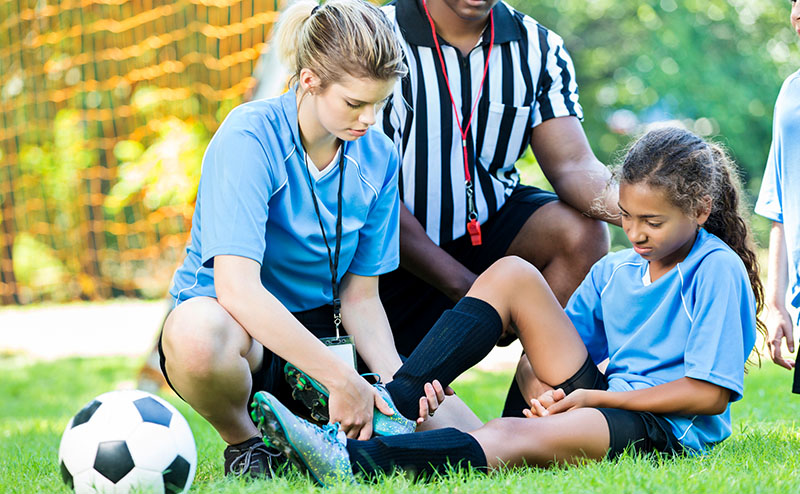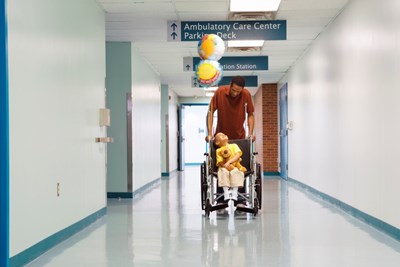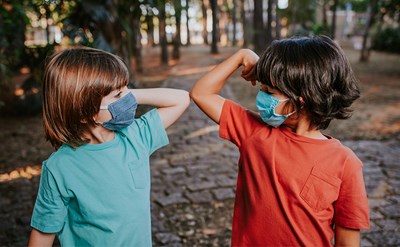According to research from the CDC, sports injuries make up one-fifth of all injury-related visits to the emergency department (ED)—particularly among adolescents and young adults. Most ED visits for sports injuries were made by patients 10- to 19-years old (66 percent) and by males (66 percent).
Football and basketball account for more than 25 percent of sport-related ED visits among young people. Sprains, strains, and dislocations are the most frequent injury.
Stay safer from sports injuries by wearing the proper protective gear for each activity and making sure it is in good condition. Also beware of extreme temperatures and stay hydrated to avoid heat-related illnesses.
In the case of a potential concussion or other severe injury, seek emergency care immediately.
The most frequent sports-related ED visits for patients 5- to 24-years-old include:
- Football (14 percent)
- Basketball (12 percent)
- Cycling (10 percent)
- Soccer (7 percent)
- Ice or roller skating or skateboarding (7 percent)
The most frequent sports-related ED visits for 5- to 9-years-old:
- Playground (23 percent)
- Cycling (14 percent)
- Gymnastics or cheerleading (9 percent)
- Running or jogging (8 percent)
The most frequent sports-related ED visits for 10- to 14-years-old:
- Football (20 percent)
- Basketball (13 percent)
- Cycling (10 percent)
- Soccer (7 percent)
- Baseball or softball (6 percent)
The most frequent sports-related ED visits for 15- to 19-years-old:
- Basketball (16 percent)
- Football (16 percent)
- Soccer (9 percent)
- Cycling (7 percent)
- Ice or roller skating or skateboarding (6 percent)
- Baseball or softball (6 percent)
The most frequent sports-related ED visits for 20- to 24-years-old:
- Basketball (15 percent)
- Ice or roller skating or skateboarding (13 percent)
- Cycling (9 percent)
- Soccer (7 percent)
 American College of Emergency Physicians
American College of Emergency Physicians







